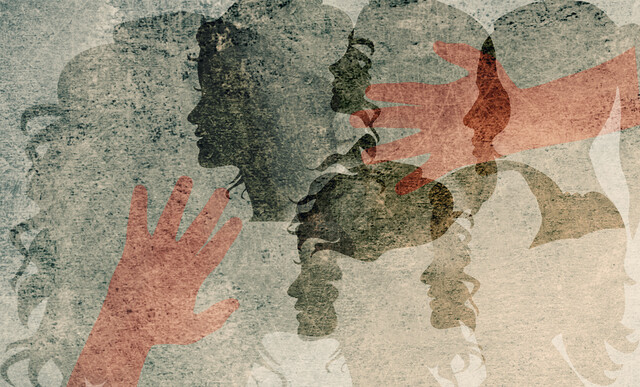Introduction
In this article, you will be given definitions of the sub-categories of eating disorder. You will be presented with a scenario wherein you will get to play "abnormal psychologist" and decide if the behavior is healthy, or unhealthy. Try to deduce, on your own, whether or not the behavior or reaction is one that requires professional help, before reading the answer.
Sub-Types of Eating Disorder
Eating Disorders
Though denial may make it difficult to get sufferers into treatment, those with eating disorders are relatively easy to spot. Those who diet or change their eating and exercise habits in order to reach an ideal weight, do have weight to lose and they do eat. Those who have anorexia, usually do not have weight to lose and eat very little, if at all. Alternatively, bulimics eat extreme quantities of food and then purge the food by vomiting, using laxatives, and using diuretics.
We would be remiss if we did not mention that America, as a nation, (and more so than any other nation), has serious dysfunctional eating and body image issues. The majority of American children grow up confused about proper nutrition and what constitutes a healthy self image. We are a fast food, instant gratification nation that promotes unhealthy eating, while simultaneously force-feeding images of alarmingly thin models and actresses down the throats of our populace, particularly our female children. Taking this into consideration, it is not surprising that 8 million Americans suffer from an eating disorder, that eating disorders have the highest mortality rate of any other mental illness, and that the mortality rate associated with anorexia nervosa is 12 times higher than the death rate of all causes of death for females between the ages of 15 and 24. Of the 8 million who suffer from eating disorders, 7 million are women, with the remaining 1 million being men. Eating disorders have become a grave national problem that continues to be largely under-addressed.
Eating Disorder Sub-Categories
There are many variations on these themes, and eating disorders often have crossover in behaviors and symptoms. For instance, some anorexics also take laxatives, and some bulimics alternate bingeing with starvation. It is easier to classify any obsession with weight, body image, and eating as "eating disorder," rather than specifying a sub-category. However, for the purposes of clear diagnosis, the below sub-categories are meant to describe symptoms specific to the three main classified types of eating disorder.
Anorexia nervosa
Bulimia nervosa
Binge-Eating Disorder
Similar to bulimia, in that the person consumes very large quantities of food at once. However, binge eaters do not use purging. The out-of-control feelings, and preoccupation with food and weight, are similar, as are feelings of depression and anxiety associated with the behavior. Binge eaters may be overweight, obese or of normal weight. .
You Decide
Hone your diagnostic skills: Read the following life scenario and decide if the situation and behaviors described fall into the healthy range, or if the person needs to seek help. The answer is at the end of the article.
Scenario
Adam, a 6-foot, 230-pound, 28-year-old man, decides he needs to lose weight for his upcoming wedding. He restricts his intake to 2000 calories per day, and exercises one hour a day, five days a week for one month. He weighs himself multiple times a day, and becomes very depressed on the days he has shown no significant loss. After a month, he manages to lose 30 pounds; however, when Adam looks at himself in the mirror, he believes he is still very overweight. He asks his fianc� if he looks slimmer, and she replies that he "looks the same" to her. He cries uncontrollably, berates himself for his lack of self control, and tells his reflection in the mirror that he is disgusting and gross. Adam begins taking laxatives after every meal, decides to restrict his caloric intake to 1000 per day, and increases his exercise schedule to two hours a day, seven days a week. He continues this behavior even after the wedding is over and begins to keep his "dieting" secret from his new wife and extended family.
Mood Disorders Up Close
Sub-Types of Mood Disorder
Clinical Depression
Bipolar Disorder
Previously termed "manic/depressive disorder," it is characterized by frequent mood swings, which dip into depression and shoot up to mania, then back through the cycle again. Often described as a "roller coaster" ride, there is no way of predicting when a high or low will strike, or for how long it will last. The low, or depressive, side of this disorder is similar to the symptoms felt in the above described "clinical depression," while the manic end, or high mood swing, is described as feeling euphoric, energetic, and hyper-sexual. In rare instances one can experience mania and depression at the same time.
Seasonal Affective Disorder (SAD)
Postpartum Depression
A form of depression that occurs after the birth of a baby. Unlike the "baby blues" many women experience after child birth, which is caused by hormonal readjustment, postpartum depression is longer lasting and can be slight, to very severe. This form of depression can be particularly difficult, as strong feelings of guilt are associated with it. However, it is not caused by "bad parenting," weakness, or personality flaws; it is caused by a hormonal imbalance that can be corrected with treatment. This form of depression is also characterized by feelings described in clinical depression.
You Decide
Where you right? Jason is displaying healthy behaviors. He does not need professional help, although he may benefit from grief counseling. He is suffering from the forth stage of grief.






























